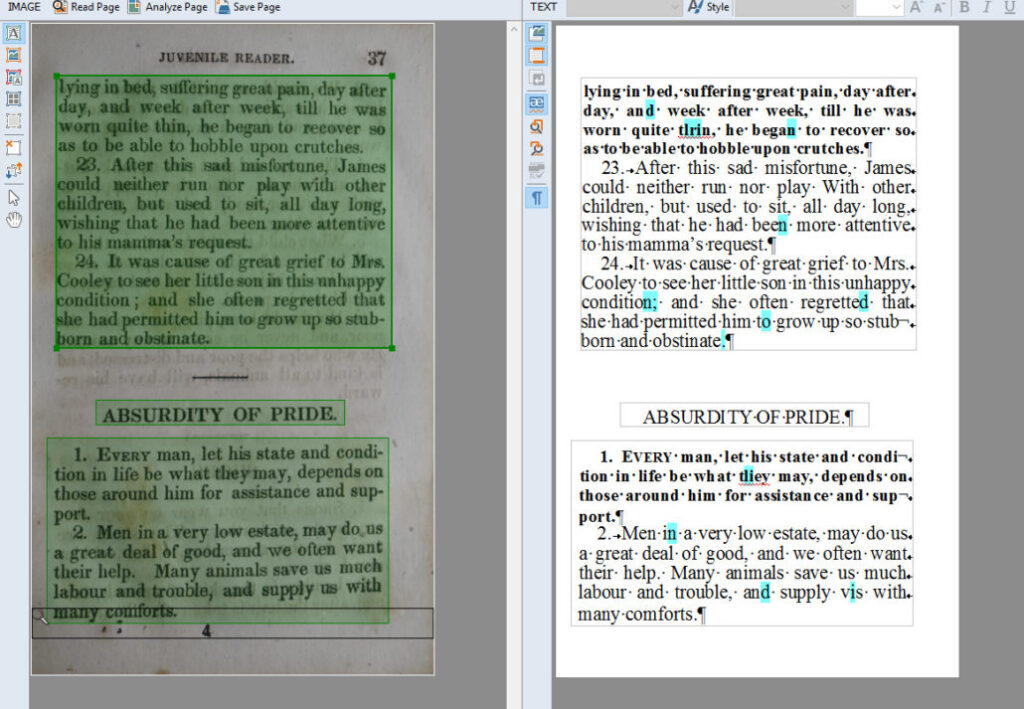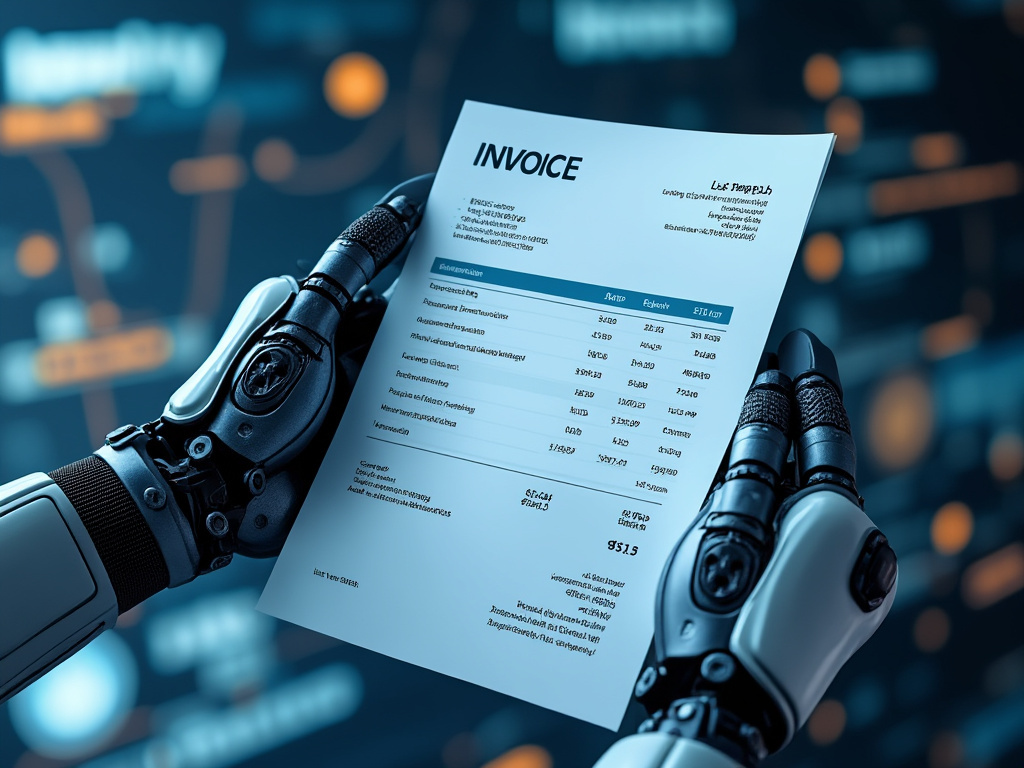
Optical Character Recognition (OCR)
Optical Character Recognition (OCR) is a transformative technology that converts documents such as scanned papers, PDFs, or images into editable and searchable ...
Intelligent Document Processing (IDP) uses AI to automate data extraction from unstructured documents, improving accuracy and efficiency for modern businesses.
Intelligent Document Processing (IDP) is an advanced technology that leverages Artificial Intelligence (AI) to automate the extraction, processing, and analysis of data from various types of documents. Unlike traditional data entry methods, IDP can handle unstructured and semi-structured data, making it a powerful tool for modern businesses dealing with vast amounts of information.
At its core, Intelligent Document Processing is the automation of data extraction from documents, transforming unstructured data into structured, usable information. It combines multiple AI technologies such as Machine Learning (ML), Natural Language Processing (NLP), Optical Character Recognition (OCR), and Robotic Process Automation (RPA) to read, understand, and process documents much like a human would, but with greater speed and accuracy.
IDP goes beyond simple text recognition. It understands the context of the data within the document, classifies the information, extracts relevant data points, and integrates this information into business systems and workflows. This capability allows organizations to streamline operations, reduce manual workload, and improve data accuracy.
Intelligent Document Processing involves several integrated steps, each contributing to the efficient handling of documents:
The process begins with data capture, where documents are collected from various sources. These could be in formats like scanned images, PDFs, emails, or digital photographs. IDP systems ingest these documents, preparing them for further processing.
Once the documents are captured, the next step is classification. The system uses AI algorithms to categorize documents based on their type—such as invoices, contracts, forms, or receipts. This automatic classification is crucial for determining how each document will be processed.
After classification, the system employs OCR and NLP technologies to extract relevant data from the documents. OCR technology reads printed or handwritten text, converting it into machine-encoded text. NLP helps in understanding the context and semantics of the text, enabling the extraction of meaningful data, including key-value pairs, tables, and entities.
Extracted data undergoes validation to ensure accuracy. The IDP system cross-references data against predefined rules or databases. If anomalies or inconsistencies are detected, the system can flag them for review. Some advanced systems incorporate feedback loops where the model learns from corrections, continuously improving its accuracy.
Validated data is then integrated into business systems such as Enterprise Resource Planning (ERP), Customer Relationship Management (CRM), or other databases. This integration allows for seamless automation](https://www.flowhunt.io#:~:text=automation) of downstream processes, such as payment processing, customer onboarding, or [compliance checks.
One of the distinguishing features of IDP is its ability to learn and adapt over time. Through Machine Learning algorithms, the system improves its performance with each processed document. It becomes better at recognizing patterns, handling new document formats, and reducing errors.
Intelligent Document Processing relies on a combination of advanced technologies to function effectively:
AI and ML are the backbone of IDP. These technologies enable the system to mimic human cognitive functions. Machine Learning models are trained on large datasets to recognize patterns, make decisions, and improve over time without explicit programming.
OCR technology converts different types of documents, such as scanned paper documents or images captured by a camera, into editable and searchable data. Advanced OCR can handle various fonts, languages, and handwriting styles, providing the textual input needed for further processing.
NLP allows computers to understand, interpret, and generate human language. In IDP, NLP helps in understanding the context of the text, identifying entities (like names, dates, amounts), and extracting relevant information accurately.
RPA automates repetitive tasks by emulating human actions interacting with digital systems. In the context of IDP, RPA can automate the movement of data between systems, trigger workflows based on extracted data, and handle exceptions.
Implementing IDP offers numerous advantages to organizations:
IDP systems can process large volumes of documents quickly and accurately, scaling operations without proportional increases in staffing or costs. This scalability is crucial for businesses experiencing growth or handling fluctuating workloads.
By automating manual data entry and processing tasks, IDP significantly reduces labor costs. It also minimizes errors that can lead to costly rework or compliance issues.
Automation reduces human errors associated with manual data entry. The use of AI and ML ensures that the system continuously improves its accuracy over time.
IDP streamlines workflows by accelerating document processing times. Faster data availability leads to quicker decision-making and improved customer service.
Automated validation and consistent data handling enhance compliance with industry regulations and standards. IDP systems can also maintain audit trails, facilitating easier reporting and audits.
Quicker processing times and reduced errors lead to improved customer experiences. For instance, faster loan approvals or claim settlements increase customer satisfaction and loyalty.
Intelligent Document Processing has applications across various industries. Here are some examples:
Processing Patient Records:
Healthcare providers deal with extensive patient documentation, including medical histories, lab reports, and insurance forms. IDP can extract and organize data from these documents, ensuring accurate and timely information access.
Insurance Claims Processing:
Health insurance companies use IDP to automate claims processing. The system extracts data from claim forms, verifies information against policies, and expedites claim approvals.
Invoice Processing:
Financial departments handle numerous invoices daily. IDP automates the extraction of invoice data—vendor names, amounts, dates—and inputs it into accounting systems, speeding up payments and improving accuracy.
Loan Applications:
Banks process loan applications by extracting data from submitted documents like pay stubs, tax returns, and identification. IDP accelerates this process, reducing approval times.
Contract Analysis:
Legal professionals use IDP to review contracts, extracting critical clauses, terms, and obligations. This automation saves time and reduces the risk of overlooking important details.
Document Management:
Law firms deal with vast amounts of case files and legal documents. IDP helps in organizing, classifying, and retrieving documents efficiently.
Shipping Documents:
Logistics companies process bills of lading, packing lists, and customs forms. IDP automates data extraction from these documents, improving supply chain efficiency.
Proof of Delivery:
Capturing and verifying proof of delivery documents ensures accurate billing and inventory management.
Resume Screening:
HR departments receive numerous resumes for job openings. IDP can extract candidate information, skills, and qualifications, aiding in quick candidate shortlisting.
Onboarding Documents:
Processing employment contracts, tax forms, and identification documents becomes efficient with IDP, ensuring a smooth onboarding process.
Policy Underwriting:
IDP extracts data from insurance applications, risk assessments, and supporting documents, assisting underwriters in evaluating risks more effectively.
Claims Management:
Automating the extraction of data from claim forms and supporting documents speeds up claim processing and enhances customer satisfaction.
Document Verification:
Mortgage lenders require extensive documentation from applicants. IDP automates the extraction and verification of data from documents like bank statements, employment verification, and credit reports.
Compliance Checks:
Automated validation ensures that all regulatory requirements are met, reducing the risk of non-compliance.
IDP is a critical component of AI automation](https://www.flowhunt.io#:~:text=AI+automation) strategies within organizations. Here’s how it connects to AI, AI automation, and [chatbots:
IDP systems are powered by AI technologies, making them integral to broader AI automation efforts. By automating document processing, organizations can create end-to-end automated workflows. For instance, in a procurement process:
This integration reduces manual interventions, accelerates processes, and improves accuracy.
Chatbots are increasingly used for customer service and support. Integrating IDP with chatbots can enhance their capabilities:
Document Uploads in Chat Interactions:
Customers can upload documents directly within a chat interface. The IDP system processes these documents in real-time, and the chatbot responds accordingly.
Personalized Responses:
By extracting relevant information from customer documents, chatbots can offer personalized assistance.
IDP doesn’t just extract data; it also enables deeper analysis through AI. Organizations can leverage this data for analytics and decision-making:
Predictive Analytics:
Analyzing patterns in documents can help predict trends, such as customer behavior or risk factors.
Sentiment Analysis:
Using NLP, businesses can gauge customer sentiment from written communications, aiding in improving services.
While IDP offers significant benefits, organizations should be mindful of potential challenges:
Handling sensitive documents requires robust security measures. It’s essential to ensure data encryption, access controls, and compliance with regulations like GDPR.
Seamless integration with current IT infrastructure may require careful planning. Compatibility with legacy systems and data formats should be evaluated.
Adopting IDP may necessitate changes in workflows and staff roles. Proper training and change management strategies are crucial for successful implementation.
Setting up IDP systems involves configuring AI models, which may require expertise. Some solutions offer pre-trained models or user-friendly interfaces to mitigate this challenge.
The field of Intelligent Document Processing (IDP) has garnered significant attention in recent years due to its potential to revolutionize how documents are processed and understood. A notable paper titled “Document AI: Benchmarks, Models and Applications” by Lei Cui et al. (2021) delves into the realm of Document AI, which encompasses techniques for the automatic reading, understanding, and analysis of business documents. This research highlights the role of deep learning in advancing document layout analysis, visual information extraction, and document image classification. The paper discusses both traditional heuristic rule-based document analysis and modern deep learning approaches, outlining future research directions in the field.
Another important contribution is from the “Workshop on Document Intelligence Understanding” by Soyeon Caren Han et al. (2023). This workshop brought together experts to address the challenges of document understanding and information extraction across domains like business, law, and medicine. The work emphasizes the need for automatic document processing techniques and introduces a data challenge using the PDFVQA dataset, which tests models on full document-level understanding involving multiple consecutive pages.
Further advancements are presented in the paper “Towards a Multi-modal, Multi-task Learning based Pre-training Framework for Document Representation Learning” by Subhojeet Pramanik et al. (2022). This research proposes a multi-task learning framework that utilizes self-supervised and supervised pre-training to develop generic document representations. The framework incorporates novel pre-training tasks to enhance the learning of text, layout, and image representations in documents, particularly focusing on multi-page documents. The study evaluates the framework on various document tasks, showcasing its effectiveness in document classification, information extraction, and retrieval.
Intelligent Document Processing (IDP) is an AI-powered technology that automates the extraction, classification, and analysis of data from various types of documents, including unstructured and semi-structured formats, streamlining business workflows and improving accuracy.
IDP combines Machine Learning (ML), Optical Character Recognition (OCR), Natural Language Processing (NLP), and Robotic Process Automation (RPA) to read, understand, and process documents efficiently.
IDP offers scalability, cost-efficiency, enhanced accuracy, improved compliance, operational efficiency, and better customer satisfaction by automating manual document processing tasks.
IDP is used in healthcare (patient records, insurance claims), finance (invoice processing, loan applications), legal (contract analysis, document management), logistics (shipping documents), human resources (resume screening), insurance (policy underwriting, claims management), and mortgage processing.
IDP enables seamless integration with AI automation and chatbots, allowing for real-time document uploads, automated data extraction, personalized responses, and streamlined end-to-end workflows across business processes.
Discover how FlowHunt can help you automate document workflows, reduce manual effort, and increase operational efficiency with AI-powered IDP solutions.
Optical Character Recognition (OCR) is a transformative technology that converts documents such as scanned papers, PDFs, or images into editable and searchable ...
Natural Language Processing (NLP) enables computers to understand, interpret, and generate human language using computational linguistics, machine learning, and...
Discover a scalable Python solution for invoice data extraction using AI-based OCR. Learn how to convert PDFs, upload images to FlowHunt’s API, and retrieve str...

